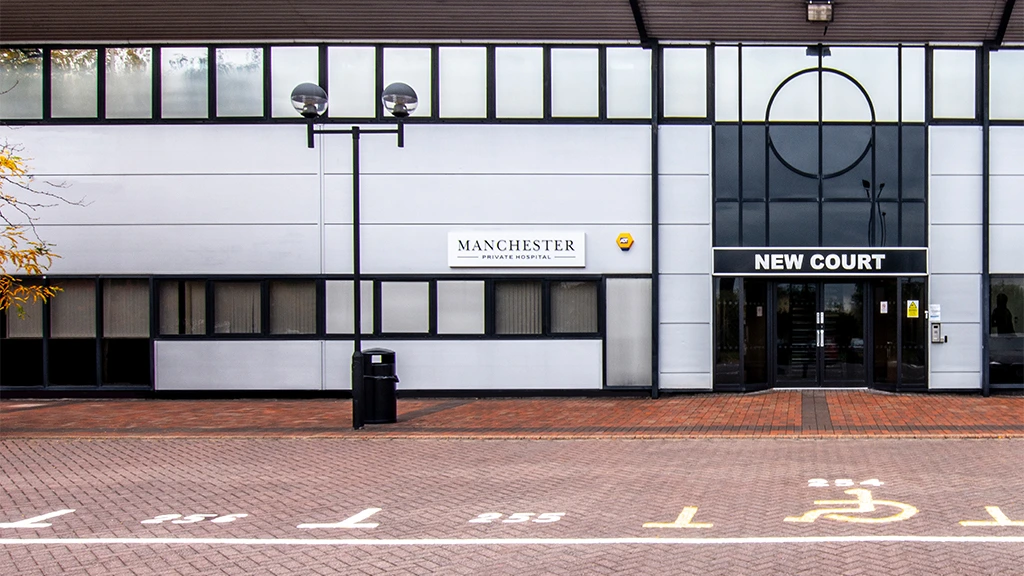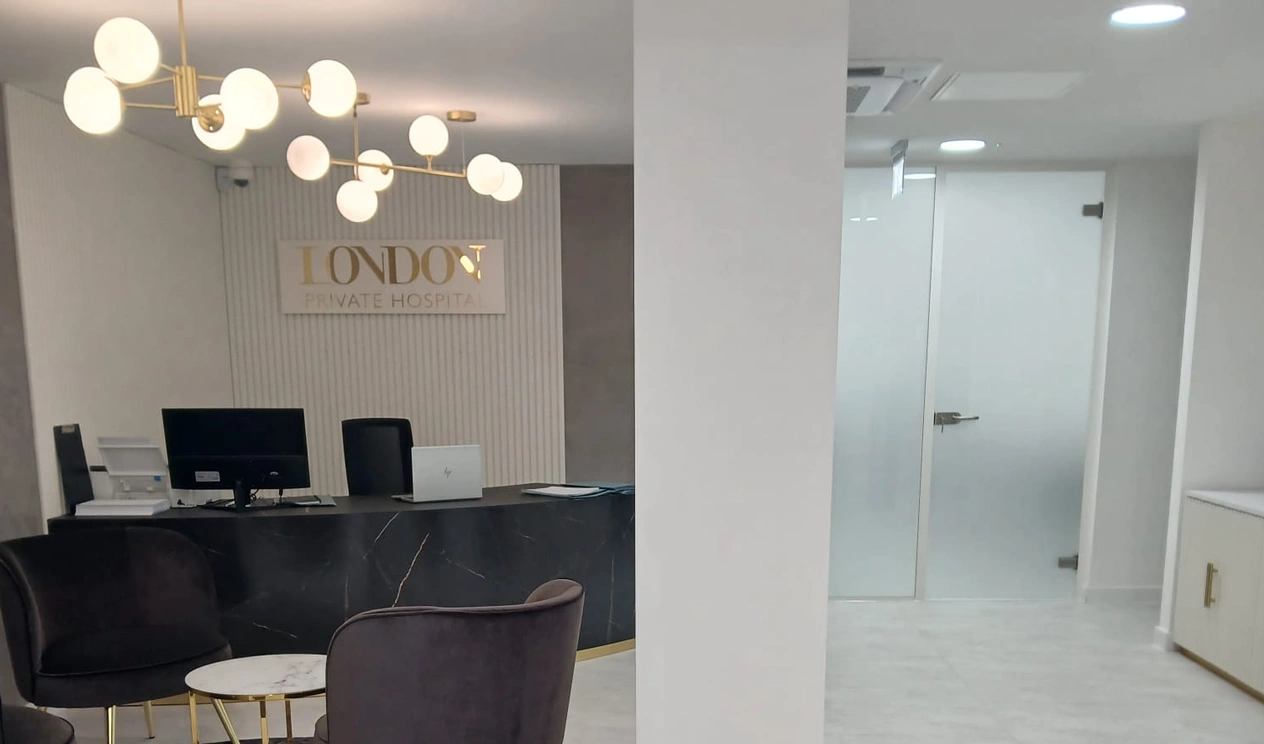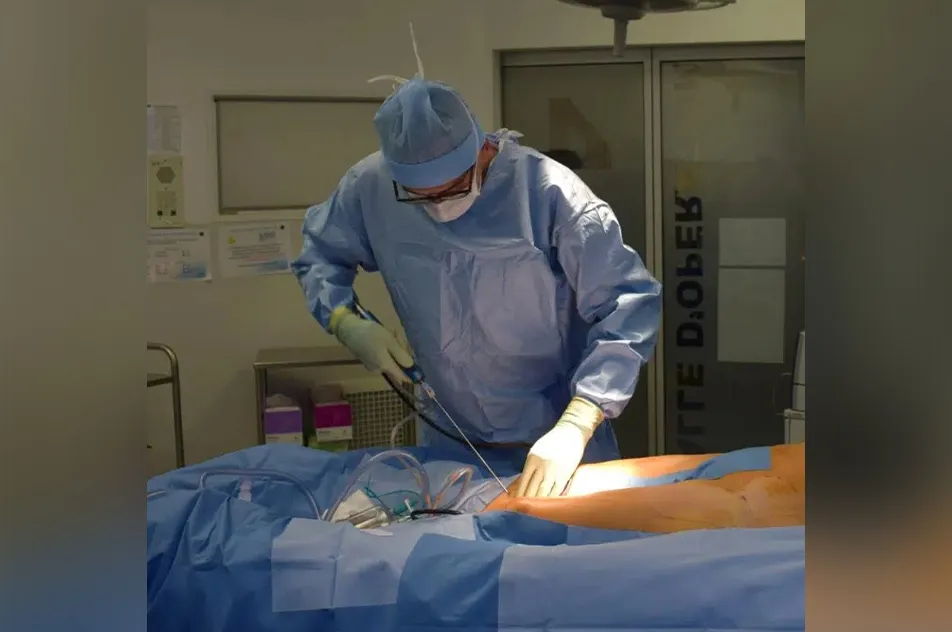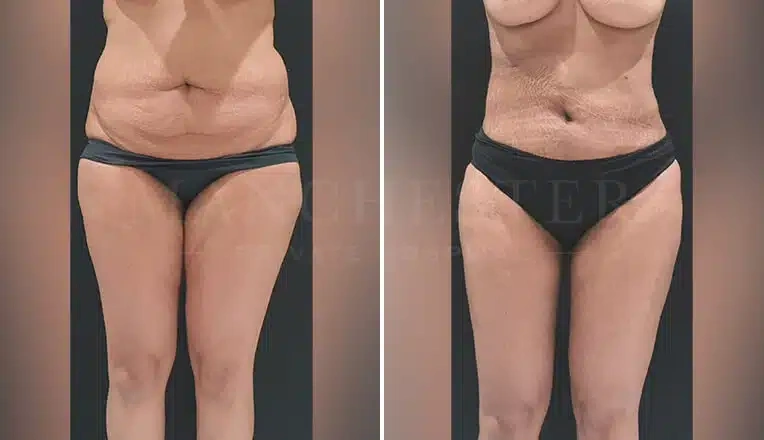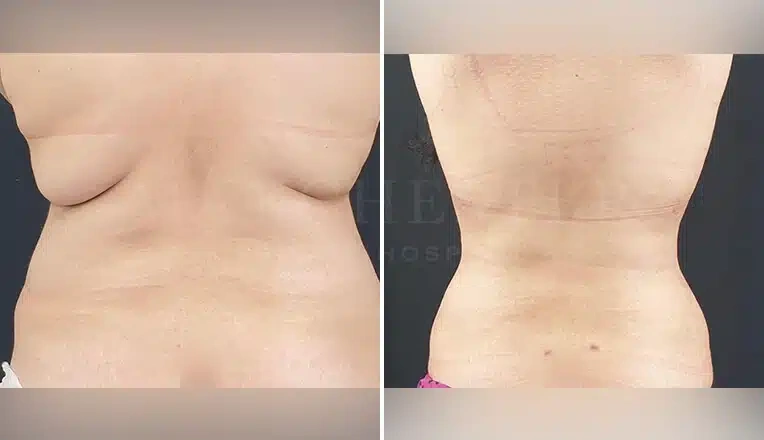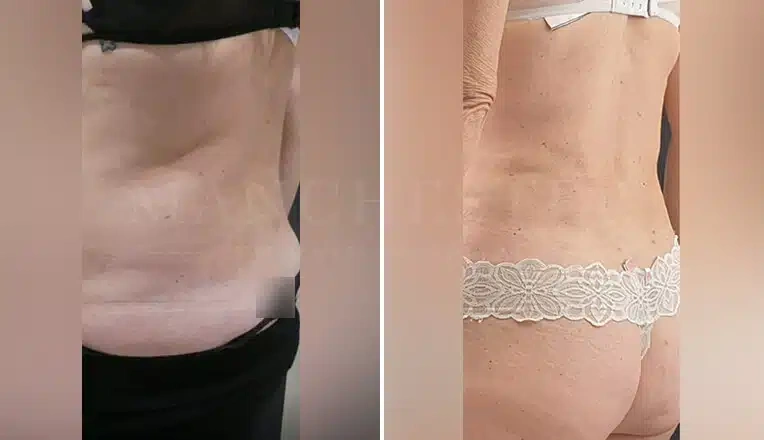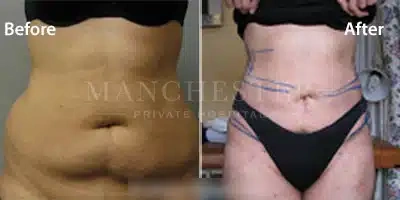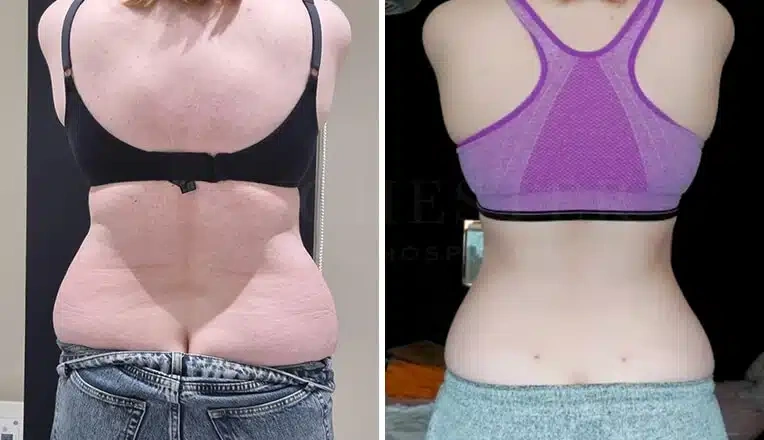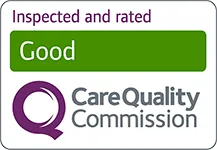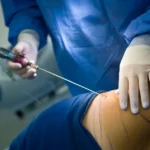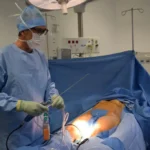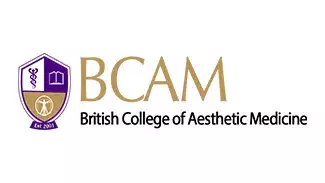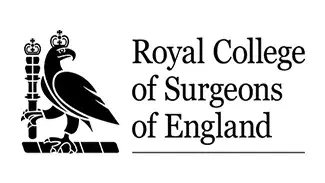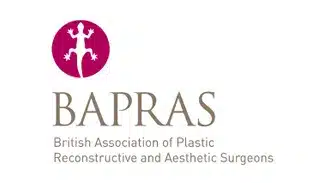Though sometimes men might also develop it, the condition predominantly affects women, usually appearing around puberty (when they have their first period) or menopause, or during pregnancy.
The lack of a registered diagnosis for lipoedema in the International Classification of Diseases makes it difficult to determine its exact prevalence. However, according to existing estimates, the chronic condition affects about 11% of adult women worldwide. Often beginning as a cosmetic concern, lipoedema transitions into a painful and often debilitating condition with excessive swelling of the affected areas, cellulitis, knock knees, and joint problems, making it essential to seek treatment.
How is Lipoedema Treated?
There is no cure for lipoedema yet. However, there are treatments to help control and alleviate the symptoms and prevent the progression of the diseases to an advanced stage where it can have life-altering impacts. Liposuction is one of them.
Liposuction for Lipoedema –A Quick Guide for Beginners
Falling under the category of ‘invasive treatments of lipoedema,’ liposuction is a fat-removal surgery typically used for patients who do not see any improvement in symptoms with non-invasive or conservative lipoedema treatments. Liposuction is not a cure for lipoedema, but it can help reduce the severity of the symptoms and prevent worsening the condition, resulting in an improved quality of life.
How Does Liposuction Help with Lipoedema?
Whether performed for lipedema or as a treatment for generalized obesity, the purpose of liposuction remains the same, i.e., to remove excess fat deposits from the body. The procedure involves breaking up stubborn fat deposits using laser or ultrasound waves and removing them from the body through tiny suction tubes. Liposuction is essentially a body contouring procedure often performed for cosmetic purposes, but it can also offer health benefits.
While liposuction isn’t a permanent cure for lipoedema, research suggests that this surgical treatment can decrease the need for ongoing medical treatments for many (up to 65%) patients.
Liposuction is also known to help lipoedema patients benefit from conservative lipoedema treatments of manual lymphatic drainage (MLD) and compression therapy.
When followed with an active lifestyle, which doctors recommend, liposuction can also help prevent the recurrence or worsening of the disease.
Fat removal surgery is also known to help reduce lipoedema-associated pain and the tendency to bruise and improve patient mobility.
Depending on the amount of fat build-up, patients may require one or more liposuction sessions to get the desired results.
Are There Any Limitations and Risks of Liposuction for Lipoedema?
As mentioned above, liposuction doesn’t cure lipoedema, which means there is a risk of re-accumulation of fat even after the surgery. The risk, however, tends to be higher for patients with an inactive lifestyle and no weight/disease management measures. Patients are generally advised to follow conservative lipoedema treatment and management practices post-surgery. The failure to do so can lead to weight gain, which then puts patients at risk of returning to their original (pre-surgery) state.
Liposuction also cannot fix the lymphatic damage or lymphedema (accumulation of lymphatic fluid in the body) that advanced state lipoedema often leads to. This is why doctors sometimes recommend getting lipo surgery before the progression of the disease to an advanced stage.
While liposuction is a fairly safe procedure (thanks to scientific advancements and the latest technologies), the risk of potential surgical complications cannot be entirely ruled out. The risk exists, like with any other surgical procedure. However, they are usually minimal and temporary.
When performed for lipoedema, the risks of the liposuction surgery include swelling, itching, or burning on the incision site(s). Some patients may also experience numbness of the skin, often lasting for several weeks, while a few might develop an infection. Slight pain and discomfort may also follow a lipoedema liposuction surgery.
Serious complications with a lipoedema liposuction surgery are rare but can include damage to the lymphatic system and the development of secondary lymphedema.
The Sum Up
While weight loss is often recommended to patients struggling with liposuction, it is worth noting that it’s only effective in improving lipoedema in patients with generalized excessive weight or obesity. Those with healthy levels or normal deposition of fat, except for the affected areas of the body, do not benefit from weight loss. Similarly, the use of laxatives and diuretics, as is often suggested by many non-professionals or amateurs, serves no purpose and has zero impact on the disease of lipoedema.
While we are still waiting for scientists to provide us with a cure for lipoedema, liposuction is the best existing treatment for it so far. No other treatment offers the level of relief or removes as much amount of fat as liposuction.
Schedule an Appointment at MPH for the Best Lipoedema Liposuction in the UK
The Manchester Private Hospital (MPH) offers the best liposuction for lipoedema in the UK. With an experienced team of trained professionals, the latest lipo technology, and numerous successful cases to our credit, MPH is a reliable name for lipoedema liposuction in the UK. Book a FREE consultation with us to learn more about the procedure, its safety, and effectiveness, and inquire about the lipoedema liposuction UK cost and your finance options.
If you’re considering or have been suggested liposuction for lipoedema, get in touch with us to have the procedure done at a place where you’re guaranteed to receive the best level of care and services from the very first consultation to complete recovery.
Liposuction Before and After Gallery
Read Our Patient Reviews
Explore our reviews made by real patients
Meet Our Expert Surgeons
Get to know our highly experienced surgeons
Consultation Locations
We offer Consultations from a number of locations around the UK
Prices and finance
We have partnered with Chrysalis Finance, allowing patients to apply for cosmetic surgery finance for all our procedures
Consultation Locations
Manchester Hospital
Manchester Private Hospital New Court, Regents Place, Windsor
Street Salford, Greater Manchester, M5 4HB.
